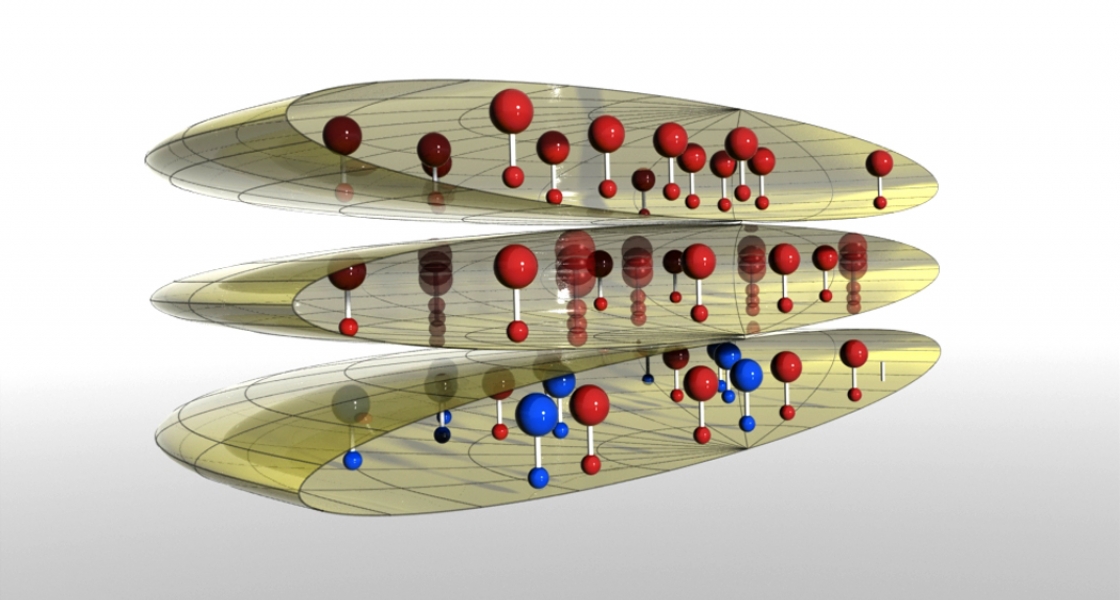Physicists would very much like to understand the physics underlying high-temperature superconductors. Such an understanding may lead to the design of room temperature superconductors for use in highly efficient and much lower-cost transmission networks for electricity. A technological breakthrough like this would drastically reduce world energy costs. However, this breakthrough requires a detailed understanding of the physics of high-temperature superconductivity.
There is already a theoretical model, called the t-J model, that contains the ingredients needed to explain the basic physics underlying high-temperature superconductors containing copper and oxygen atoms. Unfortunately, because this model includes strong interactions of many electrons, it’s far too complex to solve with traditional analytical and computational methods. Without details from the model, it’s impossible to determine the relationship of experimental observations to it. Unfortunately, theorists have been stymied in their efforts to improve their understanding of high-temperature superconductivity — until now.
A powerful collaboration between researchers at JILA, CalTech, and Harvard has come up with an elegant way to tackle the problem. Research associates Salvatore Manmana and Gang Chen and Fellows Ana Maria Rey and Jun Ye worked with Alexey Gorshkov of CalTech and Eugene Demler and Mikhail Lukin of Harvard to propose and develop a novel quantum simulator. The simulator uses a quantum gas of ultracold polar molecules of potassium-rubidium (KRb) created by Fellows Deborah Jin and Jun Ye. The ultracold molecules are polar because their electrons are unevenly distributed between the K and Rb atoms, creating an electrical asymmetry that makes them susceptible to electric fields.
The KRb molecules are located in an optical lattice, which forms the simulator. Optical lattices are crystals of light formed by interacting laser beams. They make it possible to exquisitely control the quantum motions of atoms or molecules inside the simulator.
The behavior of the ultracold molecules in the new simulator will likely model that of high-temperature superconductivity in copper-containing wires because the simulator uses external electric fields to ensure that the KRb molecules obey the same t-J model that electrons obey in high-temperature superconductors. Therefore, when the experimentalists probe the behavior of the ultracold polar molecule system, they should gain insights into the fundamental physics of high-temperature superconductors.
In a study of conditions in the new simulator, the theorists demonstrated that the experimentalists should be able to adjust conditions in the simulator to enhance superfluidity, which is similar to superconductivity in solid materials. They’ve also come up with some suggestions for studying quantum phase transitions in the simulator system, which is being explored by the Jin/Ye collaboration.
This exciting work was highlighted September 15, 2011, on the American Physical Society's web page: Physics: spotlighting exceptional research.



 The Physics Frontiers Centers (PFC) program supports university-based centers and institutes where the collective efforts of a larger group of individuals can enable transformational advances in the most promising research areas. The program is designed to foster major breakthroughs at the intellectual frontiers of physics by providing needed resources such as combinations of talents, skills, disciplines, and/or specialized infrastructure, not usually available to individual investigators or small groups, in an environment in which the collective efforts of the larger group can be shown to be seminal to promoting significant progress in the science and the education of students. PFCs also include creative, substantive activities aimed at enhancing education, broadening participation of traditionally underrepresented groups, and outreach to the scientific community and general public.
The Physics Frontiers Centers (PFC) program supports university-based centers and institutes where the collective efforts of a larger group of individuals can enable transformational advances in the most promising research areas. The program is designed to foster major breakthroughs at the intellectual frontiers of physics by providing needed resources such as combinations of talents, skills, disciplines, and/or specialized infrastructure, not usually available to individual investigators or small groups, in an environment in which the collective efforts of the larger group can be shown to be seminal to promoting significant progress in the science and the education of students. PFCs also include creative, substantive activities aimed at enhancing education, broadening participation of traditionally underrepresented groups, and outreach to the scientific community and general public.